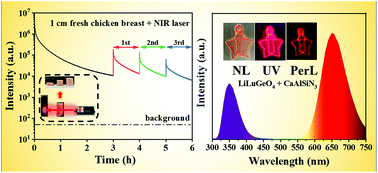Angewandte Chemie., 2019, 58(51), 18670-18675. https://onlinelibrary.wiley.com/doi/abs/10.1002/anie.201911419

Very little is known about the realm of solid-state metal halide compounds comprising two or more halometalate anions. Such compounds would be of great interest if their optical and electronic properties could be rationally designed. Herein, we report a new example of metal halide cluster-assembled compound (C9NH20)9[Pb3Br11](MnBr4)2, featuring distinctly different anionic polyhedra, namely, a rare lead halide cluster [Pb3Br11]5− and [MnBr4]2−. In accordance with its multinary zero-dimensional (0D) structure, this compound is found to contain two distinct emission centers, 565 nm and 528 nm, resulting from the formation of self-trapped excitons and 4T1–6A1 transition of Mn2+ ions, respectively. Based on the high durability of (C9NH20)9[Pb3Br11](MnBr4)2 upon light and heat, as well as high photoluminescence quantum yield (PLQY) of 49.8 % under 450 nm blue light excitation, white light-emitting diodes (WLEDs) are fabricated, showcasing its potential in backlight application.









